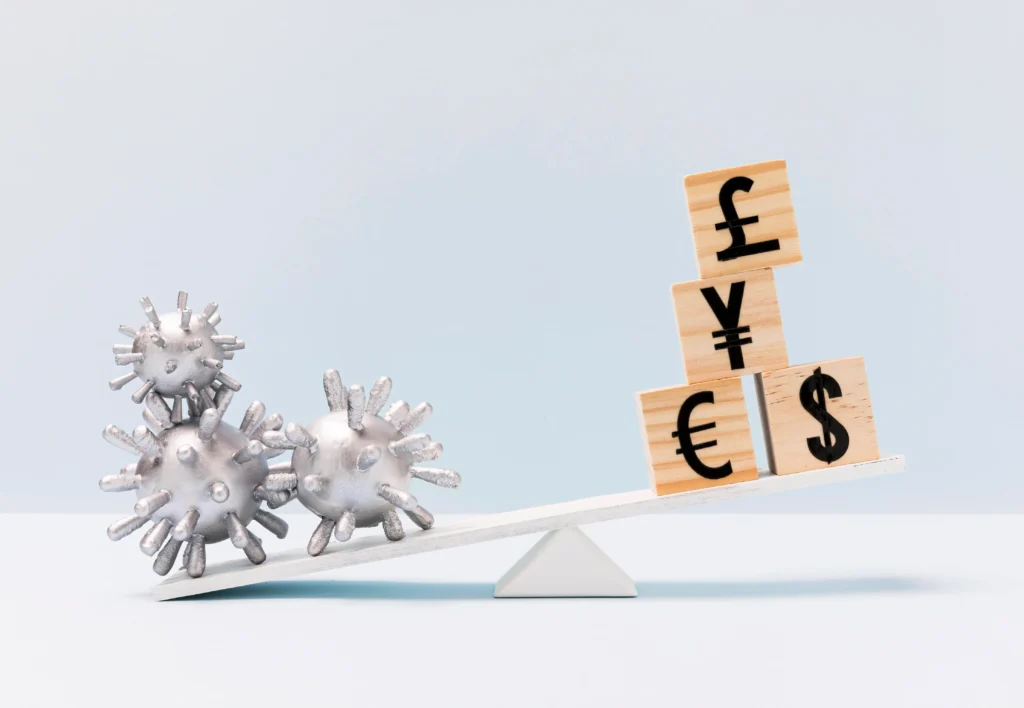Trading can be mentally exhausting. Rapid market movements, constant decision-making, and financial pressure create stress that affects both performance and judgment. Learning how to manage trading stress isn’t optional — it’s essential. Stress management allows traders to think clearly, execute consistently, and maintain the balance needed for long-term success.
Understanding Trading Stress
Trading stress stems from uncertainty. Every trade carries risk, and the human mind reacts to that uncertainty as potential danger. Over time, this reaction leads to physical tension, fatigue, and emotional burnout.
Common stress triggers include:
- Frequent losses or drawdowns.
- Fear of missing opportunities (FOMO).
- Overleveraging or inconsistent results.
- Lack of recovery time between sessions.
Note: Stress itself isn’t the problem — it’s how you respond to it that determines whether it fuels focus or causes collapse.
The Link Between Stress And Decision Quality
Under stress, the brain’s emotional centers (amygdala) override rational thinking. In trading, that means acting on impulse rather than analysis. You close winners too early, hold losers too long, or jump into trades without a plan.
The longer this cycle continues, the more your confidence erodes — not from poor market conditions, but from mental fatigue.
Tip: Reducing stress starts with awareness. If you can recognize when your body or emotions tighten, you can pause before reacting.
Practical Techniques For Managing Trading Stress
1. Establish A Structured Routine
Consistency reduces chaos. Start and end your trading day at fixed times. Review charts calmly before opening positions, and avoid trading impulsively after major news events.
A structured approach makes trading predictable even when markets aren’t.
2. Limit Screen Time
Watching every tick of the market amplifies tension. Plan your trades, set alerts, and step away between sessions. Less exposure means fewer emotional reactions.
3. Focus On Process, Not Outcome
Every loss feels heavier when you tie it to your self-worth. Instead, measure success by following your plan. A disciplined trade, even if it loses, reduces stress by reinforcing control.
4. Physical Detachment
Small physical resets — standing, stretching, short walks — release tension from prolonged sitting. Exercise improves mood and lowers cortisol, the stress hormone.
Advice: A calm body supports a calm mind. Physical routines should be part of every trading plan.
Managing Stress During Active Trading
Even experienced traders face spikes of anxiety during open trades.
Try these micro-techniques in real time:
- Deep breathing for 60 seconds before placing a trade.
- Adjust screen brightness or color scheme to reduce visual fatigue.
- Reduce trade size temporarily when feeling emotionally reactive.
- Take breaks after major wins or losses — both can cloud judgment.
Note: When stress becomes physical — racing heart, clenched jaw, shaking hands — step away. No market opportunity is worth mental strain.
Building Mental Resilience
Long-term trading success requires resilience — the ability to recover quickly from stress rather than avoiding it.
To build it:
- Journal your emotions as well as trades. Identify recurring stress patterns.
- Review mistakes objectively, not emotionally.
- Maintain balance outside of trading with rest, hobbies, and social connections.
Resilient traders see losses as feedback, not personal failures. Over time, this mindset removes fear from performance.
Example: Managing Stress After Consecutive Losses
A trader experiences three losing trades in a day. Tension builds; focus fades.
Instead of reacting with frustration, they:
- Stop trading for 24 hours.
- Review trades to find common errors.
- Journal thoughts and emotions objectively.
- Resume with half their normal position size.
The next week, performance stabilizes — not from better signals, but from reduced pressure.
Tip: Breaks reset perspective. Rest is a strategy, not avoidance.
Long-Term Stress Prevention Habits
| Habit | Purpose | Implementation |
| Consistent sleep | Cognitive clarity | 7–8 hours daily |
| Scheduled breaks | Prevent burnout | Pause every 90 minutes |
| Risk control | Reduce emotional spikes | Limit exposure per trade |
| Reflection routine | Build self-awareness | Weekly review sessions |
Advice: Preventing stress is easier than managing it. Build recovery into your routine before exhaustion forces it.
Frequently Asked Questions
Can Stress Ever Be Positive In Trading?
Yes. Mild stress can heighten focus and alertness, but chronic stress impairs judgment and consistency.
What’s The Fastest Way To Reduce Trading Stress?
Step away temporarily. A few minutes of physical movement and deep breathing often resets clarity.
Does Trading Experience Reduce Stress Over Time?
Yes, experience builds familiarity and reduces emotional reactivity — but only if paired with consistent risk management.
Should I Trade When I’m Already Stressed From Other Factors?
No. External stress influences decision-making. Trading should be done with a clear, neutral mindset.
Conclusion
Stress is an unavoidable part of trading, but suffering from it isn’t. By mastering trading stress management techniques, traders can improve focus, reduce emotional volatility, and extend their performance lifespan. Markets reward calm, deliberate execution — and calmness is built, not inherited. When your mind is steady, every decision becomes clearer, every trade more purposeful, and every result more meaningful.

















